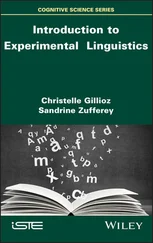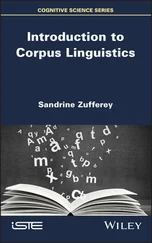Broca concluded that this was the area of the brain responsible for controlling the production of speech, which has since come to be known as Broca’s area.
Introduction
13
Later research revealed that there is a second group of aphasic patients who have considerable difficulty in understanding language. In many cases, such
patients appear to produce language reasonably fluently, but close examination reveals that they often speak in a garbled fashion. This pattern of deficit is often referred to as Wernicke’s aphasia, in acknowledgement of Carl Wernicke, a
German neurologist who first described it in detail in the 1870s. Wernicke’s aphasia is associated with damage to another area of the left hemisphere known as Wernicke’s area (WA in figure 2).
However, the initial view that language can be thought of as located in the left hemisphere and specifically in Broca’s and Wernicke’s areas has had to be refined.
As more research has been done, it has become clear that several different areas of the brain are involved in performing linguistic tasks. This does not mean that the language faculty cannot be located in the brain, but it does entail that complex distributed representations are involved which require more sophisticated experimental procedures for their study. In recent years, new techniques have been developed for studying the activity of the brain as it performs a specific linguistic task. These so-called imaging techniques such as EEG (electroencephalography), MEG (magnetoencephalography) and fMRI (functional magnetic resonance
imaging) provide images of the brain ‘at work’ and have led to a growth in our knowledge about the physiological mechanisms underlying the knowledge of
language. Studies using these techniques have found, for example, that the brain areas dealing with grammar are not all in Broca’s area and that the areas involved in semantics are not all in Wernicke’s area. Instead, more recent brain-imaging research on language suggests that each of the different components of the language system (phonology, syntax, semantics, etc.) consists of subparts and these subparts are localised in different parts of the brain. Some of these are within the traditional language areas (Broca’s and Wernicke’s) and some outside, even in the right hemisphere. However, while we may hope that this research will ultimately lead to a brain map for language and language processing, it is still in a preliminary state, and in the relevant sections that follow (15 and 26), we shall restrict ourselves to discussing the linguistic characteristics of patients who have suffered brain damage and who exhibit particular syndromes (exercise 7).
Of course, the brain is a biological organ, and above we have noted another
aspect of the biological foundations of language: the claim that the language faculty is a product of human genetic endowment. Species-specificity is consistent with such a claim, but we might ask how we could obtain additional empirical evidence for it. One source of such evidence may be provided by the study of genetically caused disorders of language. If the availability of the language faculty (and the consequent ability to acquire a grammar) is indeed genetically controlled, then we would expect failures of this genetic control to result in language
disorders. It is, therefore, of considerable interest that there is a group of language-impaired people who suffer from Specific Language Impairment
(SLI), a language disorder which must be clearly distinguished from the disorders introduced above, which are acquired as the result of damage to the brain. This
14
linguistics
group provides us with the chance of studying the effects of what is probably a genetically determined deficit in the acquisition of language. The specificity of SLI is indicated by the fact that SLI subjects have normal non-verbal IQs, no hearing deficits and no obvious emotional or behavioural difficulties. Its likely genetic source is suggested by the fact that it occurs in families, it is more frequent in boys than in girls and it affects both members of a pair of identical twins more frequently than it affects both members of a pair of fraternal twins. The nature of the impairment displayed by SLI subjects seems to be fairly narrow in scope, affecting aspects of grammatical inflection and certain complex syntactic processes. From this it might follow that if there is a ‘language gene’, its effects are rather specific and much of what is customarily regarded as language is not
controlled by it. More research on SLI will be necessary before we can fully evaluate its consequences for this issue, but we shall provide some additional discussion of these matters in sections 15 and 26 (exercise 8).
Up to now, we have focused on the four research questions raised by
Chomsky’s programme and tried to give some idea of how we might begin to
approach them. The idea of a grammar as a cognitive (ultimately, neurological) structure is common to each of these fields, which also share an emphasis on the individual. At no point have we raised questions of language as a means of
communication with others, or as a tool for expressing membership in a group, or as indicative of geographical origins. These are intriguing issues and the sociolinguistic perspective addresses this omission.
Sociolinguistics
Sociolinguistics is the study of the relationship between language use
and the structure of society. It takes into account such factors as the social backgrounds of both the speaker and the addressee (i.e. their age, sex, social class, ethnic background, degree of integration into their neighbourhood, etc.), the relationship between speaker and addressee (good friends, employer–employee, teacher–pupil, grandmother–grandchild, etc.) and the context and manner of the interaction (in bed, in the supermarket, in a TV studio, in church, loudly, whisper-ing, over the phone, by fax, etc.), maintaining that they are crucial to an understanding of both the structure and function of the language used in a situation.
Because of the emphasis placed on language use, a sociolinguistically adequate analysis of language is typically based on (sound or video) recordings of everyday interactions (e.g. dinner-time conversations with friends, doctor–patient consulta-tions, TV discussion programmes, etc.).
Recordings of language use, as described above, can be analysed in a number of different ways depending on the aims of the research. For instance, the sociolinguist may be interested in producing an analysis of regional or social dialects in order to investigate whether different social groups speak differently and to discover whether language change is in progress. Rather different is research into
Introduction
15
the form and function of politeness in everyday interaction, an interest which will lead to a search for markers of politeness in conversations and how these are related to social dimensions such as those enumerated above. Alternatively, the focus may be on so-called minimal responses (such as mmm, yeah and right) or discourse markers (such as well, you know and actually).
In addition to phenomena which arise in interactions between individuals or
small groups, sociolinguistics is concerned with larger-scale interactions between language and society as a whole. One such interaction is language shift. Here, in a multilingual setting, one language becomes increasingly dominant over the other languages, taking over more and more of the domains in which these other
languages were once used. Understanding the conditions which facilitate language shift and the dynamics of the process itself is properly viewed as a sociolinguistic task. It would, of course, be possible to raise many other research topics in the study of language which share a social focus, but because it will play a central role in much of our subsequent discussion, we shall close this introduction by going into a little more detail on the contemporary study of language variation and change.
Читать дальше
![Andrew Radford Linguistics An Introduction [Second Edition] обложка книги](/books/397851/andrew-radford-linguistics-an-introduction-second-cover.webp)











